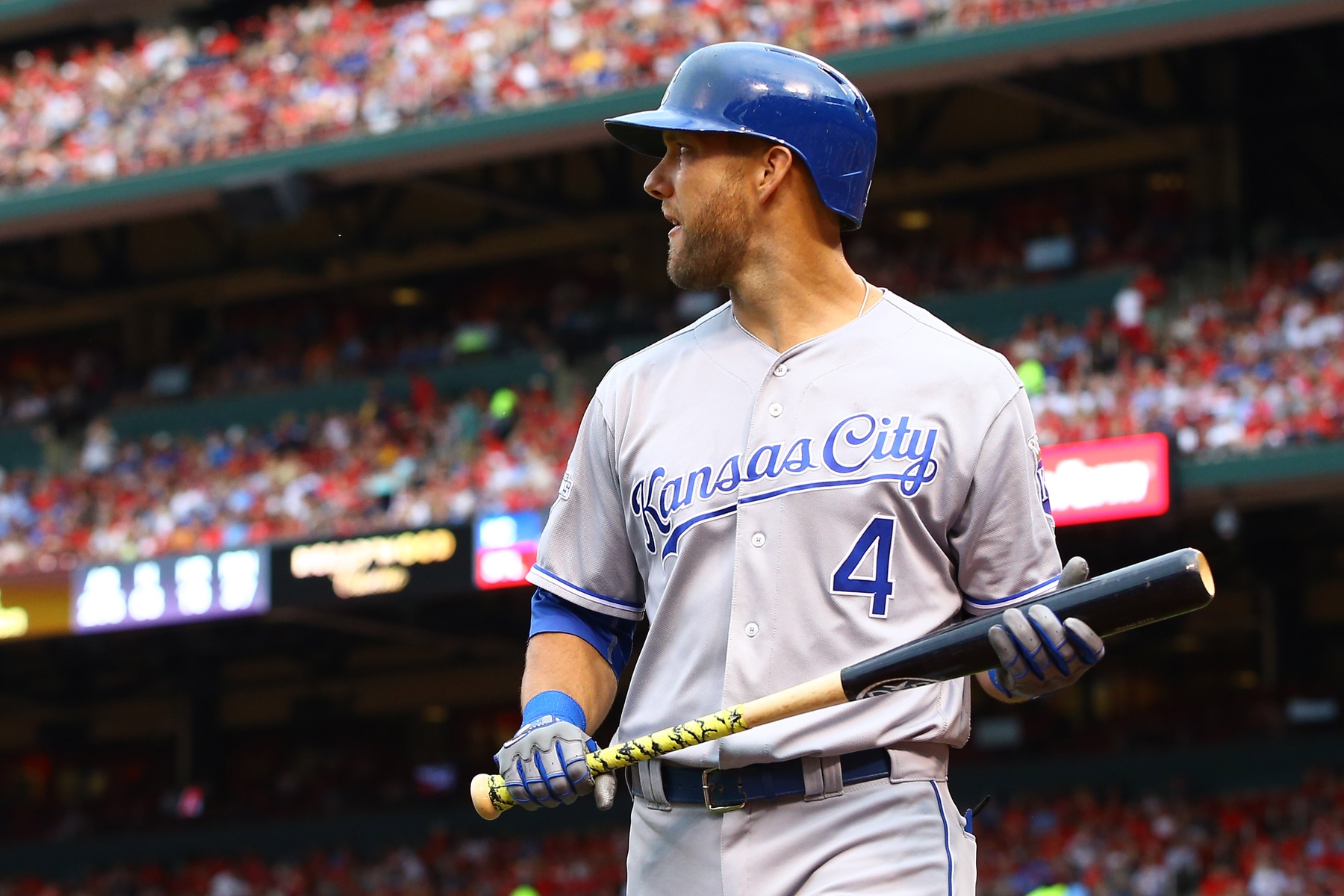The kings of contact are dead. All hail the kings of contact.
The pennant winning Royals teams of 2014 and 2015 were known for their ability to put the ball in play. Making contact, no matter the type, was meant to put pressure on the defense. From there, the Royals ran the bases with abandon all the way to back-to-back American League championships.
With the revamp of the lineup to include Jorge Soler and Brandon Moss, the Royals figure to make less contact in the upcoming season. Let’s start with the walks.
The 2016 Royals walk rate of 6.3 percent was the lowest in baseball since…the 2015 Royals walk rate of 6.3 percent. That walk rate was the lowest in baseball since the 2014 Royals, who also finished with a walk rate of 6.3 percent. Get the picture? You have to go back all the way to 2007 to the Seattle Mariners to find another team that finished with a walk rate of 6.3 percent.
The Royals rate from last summer is especially notable because league-wide, walks were on the uptick. Baseball’s overall walk rate of 8.2 percent was the highest since the league took the free base 8.5 percent of the time in 2010. The team second from the bottom in walk rate was the Philadelphia Phillies at 7.1 percent. That’s a massive gap between the 29th and 30th placed teams, a difference not seen anywhere else between two teams.
In 211 career games, Soler has drawn a walk in roughly nine percent of his plate appearances. Since joining the Athletics in 2012, Moss has posted a walk rate of 9.7 percent. Neither will lead the league in base on balls, but this is an exciting development in Kansas City. Last year only Alex Gordon and Eric Hosmer had a walk rate above league average. Add Soler and Moss to the table and you suddenly have four hitters with the potential to not only draw a walk, but to work the count.
Additionally, we can remove Cheslor Cuthbert and his 6.3 percent walk rate from the everyday lineup and reinsert Mike Moustakas. In the years the Royals were winning pennants, Moustakas had a walk rate of seven percent. Last year, in limited action, he added a full percentage point to his rate and moved it right in line with league average. If you buy the adjustments he’s made at the plate (and factor in that he was absolutely blistering the ball in the early part of the season), it’s not out of the realm of possibility the Royals third baseman could be the fifth member of the lineup to finish with a walk rate above the league average, wherever that ends up.
If you didn’t notice (perhaps you’ve been too busy drawing cartoons), the new additions to the Royals bring a little bit of pop to the lineup. And with that power potential comes the propensity to swing and miss. Neither Soler nor Moss get cheated. They take their rips and will miss more than their share of pitches. In his career, Soler has struck out in 27.6 percent of his plate appearances. Using 2012 as a measuring stick for Moss, he’s whiffed in 28.3 percent of his plate appearances since then.
You’ll recall in 2015, the Royals as a team struck out 15.9 percent of the time which was the lowest rate in baseball. Again, a massive gap between the Royals and the next closest team, the A’s, who finished at 18.1 percent. Last year, that number pushed northward (how could it not) and the Royals struck out 20.2 percent of the time. Gordon and Salvador Perez both saw increases of about eight percent in their strikeout rates. Whit Merrifield and Paulo Orlando also contributed rates above the league average. That’s a rate that figures to increase even more with the additions of Soler and Moss.
No, the 2017 Royals don’t figure to be a high contact team like we saw in 2014 and 2015. Those days are over, which may not be a bad thing. As power has reentered the game, the Royals are smart to get off the singles train. No matter that home runs are difficult to come by at The K, the threat of power can be a very real thing. It helps to have a couple of guys in the lineup who can park one into the fountains.
Finally, since the Royals seem to be done with the shopping list for offense, let’s take a stab at the lineup. Here goes.
- Gordon
- Moustakas
- Cain
- Hosmer
- Soler
- Moss
- Perez
- 2nd base
- Escobar
On the surface, this lineup just makes too much sense for Yost to actually commit to a lineup card. However, there are a couple of truisms that apply to his lineups. One, he never, ever platoons. And two, he will find a way to alternate left and right handed hitters. For a moment, there was a temptation to place Escobar at the top of the order, but a strict left-right alternate order with Escobar hitting leadoff would push Gordon to the bottom of the order. The lineup above is one that features some extra base ability at the top with some thunder in the middle. And Moustakas at the second spot can crush some dingers, too. It’s not a league leading offense, but it looks fairly tricky to navigate.

1 comment on “The Demise Of The Kings Of Contact”
Comments are closed.